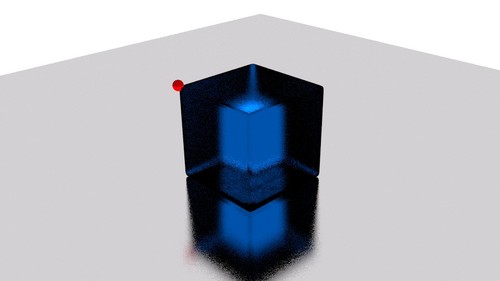Lone ant on a cube
 There exists a cube in space. One of its corners is marked. An ant starts from a random unmarked corner and moves only along the edges of the cube. If the ant is at a corner, it chooses an edge randomly and moves to an adjacent corner with uniform velocity.The ant starts moving when the clock is at zero, and moves continuously with constant speed. If it is known that the ant traverses a side of the cube in one second, find the expected time elapsed(in seconds) before it reaches the marked corner for the first time. If the answer can be expressed as
in simplest form, enter
.
There exists a cube in space. One of its corners is marked. An ant starts from a random unmarked corner and moves only along the edges of the cube. If the ant is at a corner, it chooses an edge randomly and moves to an adjacent corner with uniform velocity.The ant starts moving when the clock is at zero, and moves continuously with constant speed. If it is known that the ant traverses a side of the cube in one second, find the expected time elapsed(in seconds) before it reaches the marked corner for the first time. If the answer can be expressed as
in simplest form, enter
.
Liked this? Try similar problems in the set: Ants on an adventure!
The answer is 9.
This section requires Javascript.
You are seeing this because something didn't load right. We suggest you, (a) try
refreshing the page, (b) enabling javascript if it is disabled on your browser and,
finally, (c)
loading the
non-javascript version of this page
. We're sorry about the hassle.
The problem can be modelled as a Markov chain . Let be S = { 1 , 2 , 3 , 4 } the state space, in which 4 is the marked point, 3 are the three points directly connected to the marked one, 1 is the farthest point from the marked point and 2 are the three points directly connected to 1 . Let be P = p i j the transition matrix in which each element represent the probability of passing from state i to j for i , j ∈ { 1 , 2 , 3 , 4 }
P = ⎝ ⎜ ⎜ ⎛ 0 3 1 0 0 1 0 3 2 0 0 3 2 0 0 0 0 3 1 1 ⎠ ⎟ ⎟ ⎞
Notice that p 4 j is an absorbing state. From Markov process theory, P is already written in the canonical form, where Q is
Q = ⎝ ⎛ 0 3 1 0 1 0 3 2 0 3 2 0 ⎠ ⎞ ⟹ I − Q = ⎝ ⎛ 1 − 3 1 0 − 1 1 − 3 2 0 − 3 2 1 ⎠ ⎞
Hence,
N = ( I − Q ) − 1 = ⎝ ⎛ 2 5 2 3 1 2 9 2 9 3 3 3 3 ⎠ ⎞ .
So, E i [ 4 ] = j = 1 ∑ 4 n i j is the expected value of reaching 4 starting from i . If we sum up, we'll get E 1 [ 4 ] = 1 0 , E 2 [ 4 ] = 9 , E 3 [ 4 ] = 7 . Since the starting state is given by the stochastic vector s 0 = ( 7 1 7 3 7 3 0 ) , where s i is the probability of starting the process at i , the expected value of reaching 4 , E [ 4 ] , is
E [ 4 ] = s 1 ⋅ E 1 [ 4 ] + s 2 ⋅ E 2 [ 4 ] + s 3 ⋅ E 3 [ 4 ] + s 4 ⋅ E 4 [ 4 ] = 7 5 8 = b a
Eventually
b a + 5 = 9